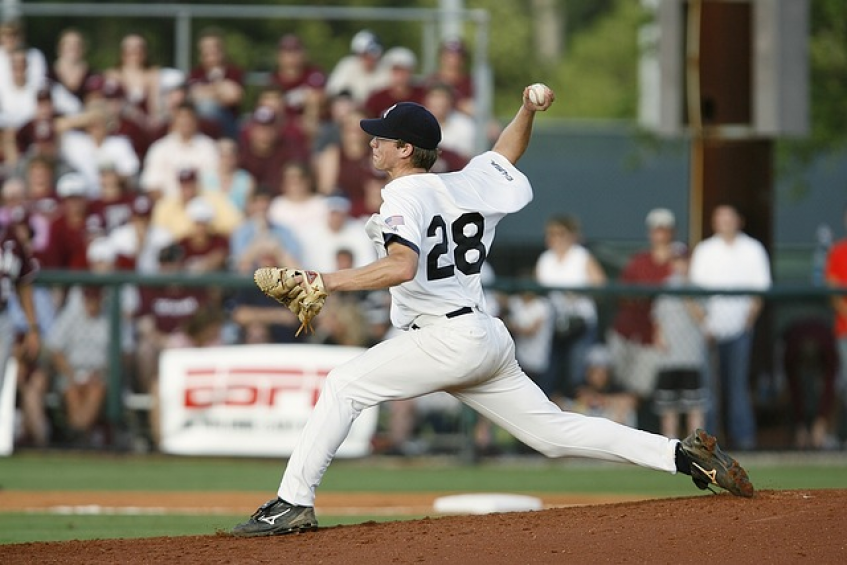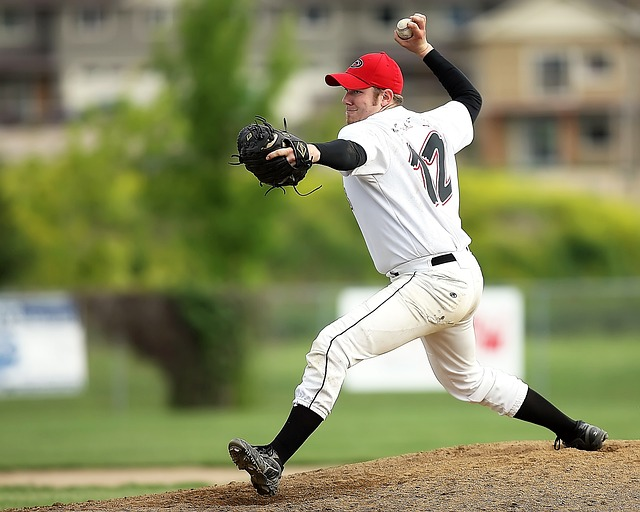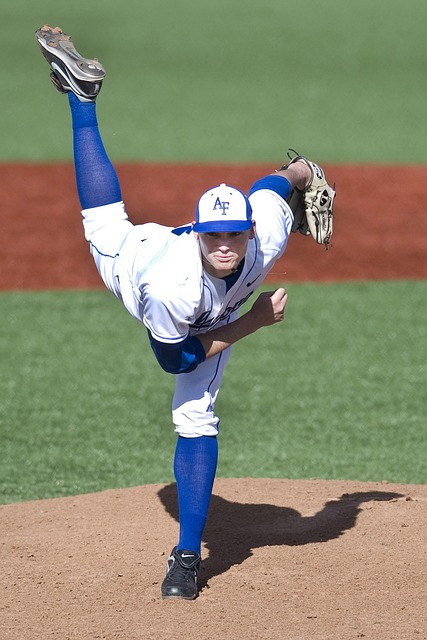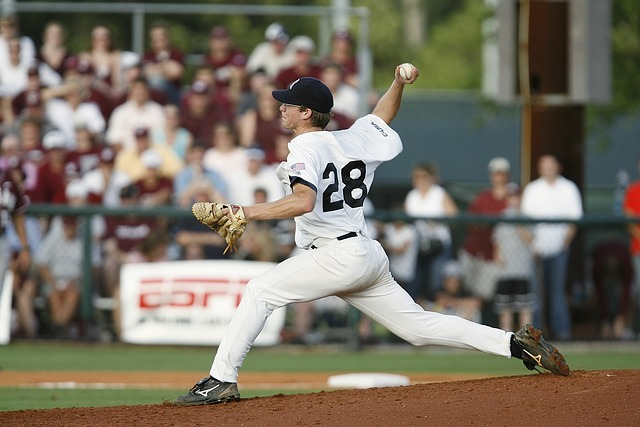
Baseball is a sport that is enjoyed by millions of people around the world. It is a game that is both challenging and exciting, and it requires a great deal of skill and strategy to be successful. One of the most important aspects of baseball is the pitching, and there are many different types of pitches that a pitcher can throw. In this blog post, we will explore some of the most common types of pitches in baseball and discuss their characteristics, how they are thrown, and when they are used.
The fastball is perhaps the most well-known and commonly thrown pitch in baseball. It is a pitch that is thrown with maximum velocity and minimal spin, and it generally travels straight in trajectory. Fastballs are typically the first pitch that a young pitcher learns, and they are an essential part of a pitcher's repertoire. A good fastball can be very difficult to hit, especially if it is thrown with high velocity and good location.
There are two main types of fastballs: the four-seam fastball and the two-seam fastball. The four-seam fastball is the most common type of fastball and is thrown with a grip that places the fingers across the seams of the ball. This grip allows the pitcher to generate maximum velocity and minimal spin, resulting in a pitch that travels straight and true. The two-seam fastball, on the other hand, is thrown with a grip that places the fingers along the seams of the ball. This grip causes the ball to rotate slightly as it is thrown, resulting in a pitch that has some movement and can be more difficult to hit.
Fastballs are often used as a pitcher's "out" pitch, meaning that it is the pitch that the pitcher relies on to get a strikeout or induce a weakly hit ball. Fastballs are also commonly used to establish the pitcher's velocity and to set up other pitches later in the game. Overall, the fastball is an essential pitch for any pitcher to master, and it is one that every baseball player and fan should be familiar with.

The curveball is another popular pitch in baseball, and it is known for its ability to break sharply downward as it approaches the plate. The curveball is thrown with spin that causes the ball to curve downward, making it difficult for the batter to make solid contact. Curveballs are typically thrown at a slower velocity than fastballs, which makes them a good "change of pace" pitch.
Curveballs are typically thrown with a grip that places the fingers on top of the ball, with the thumb on the bottom. This grip allows the pitcher to generate spin on the ball, which causes it to break downward as it approaches the plate. The curveball can be a difficult pitch to master, as it requires precise control of the release point and spin on the ball. A well-thrown curveball can be a devastating pitch, but if it is not thrown correctly, it can be hit hard by the batter.
Curveballs are often used as a "strikeout" pitch, meaning that they are thrown when the pitcher needs to get a strikeout looking to end an inning or a rally. Curveballs can also be used to keep the batter off-balance and to set up other pitches later in the game. Overall, the curveball is a pitch that every pitcher should learn, as it is a valuable weapon in any pitcher's arsenal. Learn more about how to throw a curveball.
The slider is a pitch that is thrown with spin that causes the ball to break laterally as it approaches the plate. This makes it difficult for the batter to make solid contact with the ball, as it may move out of the strike zone at the last second. The slider is typically thrown with a similar arm motion to a fastball, but with the wrist turned slightly to the side, creating the necessary spin. The key to throwing an effective slider is to maintain consistency in the grip and release, as even a small variation in spin can cause the ball to hang in the strike zone and be hit hard.
Sliders are often used as a complementary pitch to a fastball, as the two pitches look very similar coming out of the pitcher's hand. This can keep batters off balance and make it difficult for them to time their swing. Learn about how to throw a slider.

The changeup is a pitch that is thrown with the same arm motion as a fastball, but with less velocity, designed to deceive the batter by changing the speed. This pitch is all about disrupting the batter's timing, as they are expecting a fastball and must adjust quickly when they see the slower speed. Changeups are typically held with a "circle change" grip, in which the pitcher holds the ball with their thumb and index and middle fingers in a circle shape.
The key to throwing a good changeup is to maintain the same arm speed and delivery as a fastball, while slowing down the motion of the wrist and hand. This can take a lot of practice to perfect, as the pitcher must be able to maintain consistency in their delivery even when throwing at different speeds. When executed properly, a changeup can be a devastating pitch, fooling batters into swinging too early or too late and inducing weak contact or swings and misses. Learn more about how to throw a change-up.
The split-finger fastball, or "splitter" for short, is a pitch thrown with a grip that causes the ball to drop sharply as it approaches the plate. This pitch is similar to a fastball in terms of velocity, but the grip is slightly different. The pitcher holds the ball with their index and middle fingers spread apart slightly, with the ball resting on the tips of those fingers. This grip creates a lot of downward movement on the ball, making it difficult for batters to make solid contact.
The split-finger fastball can be a challenging pitch to throw, as the grip requires a lot of finger strength and can put extra strain on the arm. However, for pitchers who can master it, the splitter can be a devastating weapon that can induce weak ground balls and swings and misses. Learn more about how to throw a split-finger fastball.
The knuckleball is a pitch thrown with minimal spin that causes the ball to move erratically in flight, making it difficult for the batter to predict where it will go. This pitch is typically thrown with the fingertips, rather than the full hand, in order to minimize the amount of spin on the ball. The knuckleball is notoriously difficult to control, as it can move in any direction and at any speed, but when thrown effectively, it can be one of the most unhittable pitches in the game.
The key to throwing a good knuckleball is to find the right grip and release that works for the individual pitcher. Some pitchers hold the ball with their fingertips and release it with a pushing motion, while others use a more traditional throwing motion but focus on minimizing the spin on the ball. Knuckleball pitchers often have long and successful careers, as the pitch is difficult to master but can be incredibly effective when executed properly. Learn more about how to throw a knuckleball.
The screwball is a pitch that is thrown with spin that causes the ball to break in the opposite direction of a curveball. This pitch is typically thrown by left-handed pitchers, as the spin causes the ball to move away from right-handed batters and in towards left-handed batters. The screwball is thrown with a similar arm motion to a curveball, but with the wrist turned inwards at the point of release.
The screwball can be a difficult pitch to master, as the grip and release require a lot of coordination and can put extra strain on the arm. However, for pitchers who can throw it effectively, the screwball can be a powerful weapon that can keep batters off balance and induce swings and misses.

The cutter, also known as a cut fastball, is a pitch that moves slightly in on a same-handed batter, making it difficult to hit. This pitch is thrown with spin that causes the ball to move laterally and can be used to jam batters and induce ground balls.
Cutter grips can vary, but generally, the pitch is thrown with a grip that is similar to a fastball but with a slight adjustment of the fingers. This pitch has become increasingly popular in recent years, with many pitchers utilizing it as a reliable weapon in their arsenal.
The forkball is a pitch that is thrown with a grip that resembles a fastball, but with the index and middle fingers spread further apart, which causes the ball to drop sharply as it approaches the plate. This pitch is similar to a split-finger fastball but requires a wider spread between the fingers.
Forkballs are known for their sharp downward movement, making them an effective pitch for inducing ground balls and strikeouts. However, this pitch can also put a strain on the arm and is considered to be a difficult pitch to master. As a result, it is not as commonly used as some other pitches in the game.
The split-changeup is a variation of the traditional changeup and is thrown with a split-finger grip, resulting in lower velocity and increased movement. This pitch is designed to deceive batters by mimicking the arm motion of a fastball, but with a slower speed and more movement.
Split-changeups are thrown with the same arm action as a fastball, but this type of baseball grip causes the ball to tumble and dive as it approaches the plate. This pitch requires a lot of practice to master, but when thrown effectively, it can be a devastating pitch that can keep batters off balance.
The sinker is a pitch that is thrown with a grip that causes the ball to sink as it approaches the plate, often inducing ground balls. This pitch is commonly used by pitchers to get quick outs and can be an effective weapon when thrown correctly.
Sinker grips can vary, but the pitch is typically thrown with a grip that places the fingers on the sides of the ball rather than on top. This grip, combined with a downward arm motion, causes the ball to sink and drop as it approaches the plate. Lear more about how to throw a sinker.
The circle changeup is another variation of the traditional changeup and is thrown with a circle grip, resulting in decreased velocity and increased movement. This pitch is similar to the split-changeup but is thrown with a different grip and motion.
The circle changeup is thrown with a circle grip, which is created by forming a circle with the thumb and index finger and placing the other fingers around the ball. This grip, combined with a slower arm motion, causes the ball to move unpredictably and can be a difficult pitch for batters to hit. Many pitchers use the circle changeup as a reliable off-speed pitch in their arsenal.
The palmball is a pitch that is thrown with the ball held in the palm of the hand, causing it to move unpredictably and fall off the table late in its trajectory. This pitch is typically used as a surprise pitch and can be difficult for batters to track due to its unusual movement.
Palmballs are thrown with a loose grip, using only the palm of the hand to grip the ball. The pitcher's arm motion is similar to that of a fastball, but the grip and release cause the ball to move in unexpected ways. Because of its unpredictable movement, the palmball can be a risky pitch to throw, but when executed properly, it can be an effective way to keep batters guessing.
The knuckle curve is a pitch that combines the grip of a knuckleball with the throwing motion of a curveball, resulting in a pitch with sharp downward movement. This pitch is challenging to master but can be a devastating weapon for pitchers who can execute it effectively.
To throw a knuckle curve, the pitcher places the index and middle fingers on the seams of the ball, similar to a knuckleball grip. However, instead of throwing the pitch with a knuckleball motion, the pitcher uses a curveball motion, snapping the wrist downward as they release the ball. This combination of grip and motion causes the ball to drop sharply as it approaches the plate.
The eephus is a pitch that is thrown with a high arcing trajectory and very low velocity, often used as a trick pitch to catch batters off-guard. This pitch is usually only thrown a few times per game as a surprise pitch, as it can be difficult to throw and is not typically used as a primary pitch.
Eephus pitches are thrown with a slow, loopy windup and a release point that is much higher than normal. The pitch typically has a velocity of 50-60 mph, much slower than the average fastball. While the eephus is a risky pitch to throw, it can be effective in catching batters off-guard and inducing weakly hit ground balls or pop-ups.
The gyroball is a pitch that is still somewhat controversial in baseball. It was first popularized in Japan by pitcher Daisuke Matsuzaka, but its origins are unclear. The pitch is thrown with a unique grip that is said to create a gyroscopic spin on the ball. This spin causes the ball to move unpredictably in flight, making it difficult for batters to make solid contact. Some experts believe that the gyroball is just a variation of other pitches, while others argue that it is a completely separate pitch.
The grip for the gyroball is similar to that of a two-seam fastball, with the middle and index fingers positioned on top of the ball. However, the grip is slightly off-center, with the fingers shifted to the right for right-handed pitchers and to the left for left-handed pitchers. The pitcher then throws the ball with a delivery that creates a spin that is said to be similar to that of a bullet fired from a rifle.
Despite the controversy surrounding the gyroball, some pitchers have had success with it, while others have struggled to master it. The pitch is still relatively rare in baseball and is not commonly used in game situations.
In conclusion, understanding the different types of pitches in baseball is crucial for any player or fan. Knowing what pitches to expect can give a batter an advantage at the plate, while pitchers can use different pitches to keep the batter guessing and off balance. Each pitch has its own unique characteristics and can be effective when used correctly. From the fastball to the eephus, mastering these pitches takes practice, skill, and a lot of hard work to throw well. Learn more about how to throw harder.
Chris Sloan is a former baseball league commissioner and travel baseball coach who has made significant contributions to the sport. In 2018, he founded selectbaseballteams.com, a website that helps parents find youth and travel baseball teams in their local areas. Since its launch, the website has experienced impressive growth, offering a wealth of resources including teams, news, tournaments, and organizations. Chris's unwavering passion for baseball and his innovative approach to connecting parents with quality baseball programs have earned him a respected reputation in the baseball community, solidifying his legacy as a leading figure in the world of youth and travel baseball.
There are 0 comments on "From Fastballs to Eephus: Understanding the Different Pitches in Baseball"
chandler allen says:
"Hi my name is chandler, i’ve enjoyed..."
On Wanting to tryout for summer ball. as an 18 year old
david graham says:
"With no current MLB team in Canada,..."
On With no current MLB team in
Charles Chavez says:
"To All Coaches: Do you have13U or..."
On Looking for Games